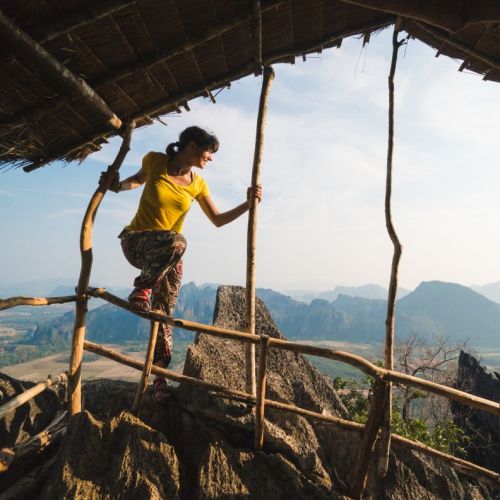I present to you… the Atacama Desert, the driest desert in the world.
The region boasts stunning geologic formations and has provided scientists with a wealth of research opportunities ( I mean.... look at it ).

The Atacama Desert is a plateau in South America, covering a 1,000 kilometre strip of land on the Pacific coast, west of the Andes mountains. It sits at an altitude of over 2500m, with its highest point being Ojos del Salado at 6893m, having the record for the world's highest volcano.
The Atacama is the oldest desert on Earth and scientists estimate that the desert's inner core has been hyperarid for roughly 15 million years, thanks to a combination of unique geologic and atmospheric conditions in the area.
This desert is one of the best places in the world to conduct astronomical observations. Hundreds of thousands of stars can be viewed via telescope since the desert sees as many as 330 cloud-free nights each year.
In more recent years, the desert has become the home of the largest ground telescope in the world, ALMA, where studies of the formation of stars are conducted with the help of the images captured by 66 radio telescopes.
The desert's hyperarid core, is largely without plant and animal life, save for a few strains of microbial life. Scientists hope that studying the dry, dusty conditions of the Atacama will reveal secrets about the key to life in other parts of the universe, such as Mars.

Soil samples from this region are very similar to samples from Mars; for this reason, NASA uses this desert for testing instruments for missions to the red planet. The Atacama has also been used as a location for filming Mars scenes, most notably in the television series Space Odyssey: Voyage to the Planets.
The average rainfall is about 15 mm per year, although some locations only receive 1 to 3 mm in a year. Moreover, some weather stations in the Atacama have never received rain.
Most of the desert is composed of stony terrain, salt lakes (salares), sand, and felsic lava that flows towards the Andes.
Both the Andes Mountains and the Chilean Costal Range, which surround this desert, create a blockage of moisture, making the Atacama Desert a kind of death zone for vegetation, depriving the land of water and nutrients.

This region is the largest natural supply of Sodium Nitrate, which can be used for producing fertilizers and explosives amongst other things.
The oldest artificially mummified human remains have been found in the Atacama Desert. These mummies predate the Egyptian mummies by thousands of years, and the extreme lack of moisture helps in the preservation of these samples. To put this into perspective, the earliest mummy that has been found in Egypt dated around 3000 BC, while the oldest mummy recovered from the Atacama Desert is dated around 7020 BC.



For more photos with Atacama Desert from my South America 2024 trip, follow this link.






